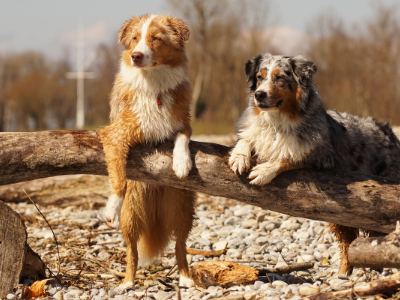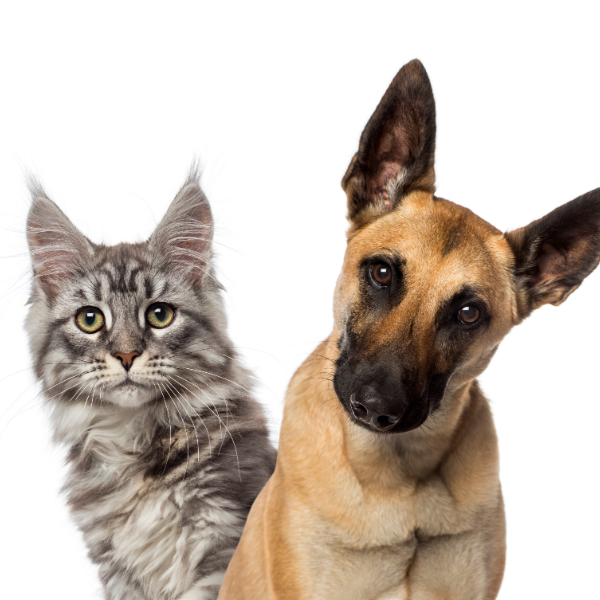What About Water?
Written on Thursday, October 23rd, 2014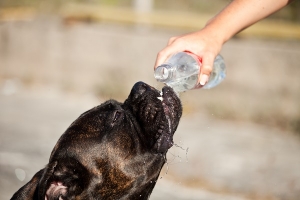
Water is the most important nutrient for all living things. Dogs and cats are no exception. Water makes up 70-80% of an adult pet's weight. It dissolves natural and unnatural substances and acts as the root of all biological processes including digestion, circulation, and waste removal. Animals must hydrate themselves regularly throughout the day to stay healthy. Pets can hydrate themselves in one of two ways: by drinking water and/or ingesting foods that contain a high moisture content. If an animal is severely dehydrated and cannot ingest water on its own, it will need to be hydrated by a vet via intravenous or subcutaneous fluids. Animals can survive much longer without food (7-10 days) than they can without water (1-2 days). Severe dehydration is a medical emergency!
Throwback Thursday: Lissa the Clouded Leopard
Written on Thursday, October 2nd, 2014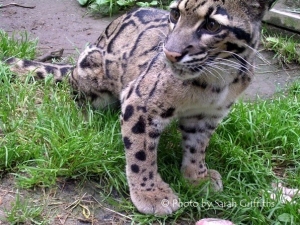
Meet Lissa. She is a clouded leopard. We've worked with several species of wild cats and Lissa was one of our favorites. Also known as Neofelis nebulosa, it is believed that this beautiful cat is the link between the big cats and the smaller feline species. These cats live from the Himalayas through Southeast Asia and into China. They are highly endangered and it is believed that there are only 10,000 adults left in the wild. Clouded leopards are formidable arboreal hunters that can literally fly through the trees. Lissa was housed at a conservation center that focused on helping raise awareness and funding for endangered wildlife. Her diet included whole quail & chicken, day-old chicks, and red meat. For more information and to help clouded leopards in Thailand, visit http://www.cloudedleopard.org/
Oprah's Story
Written on Thursday, September 11th, 2014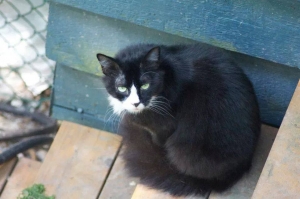
Pia H
My cat Oprah developed severe food allergies about 5 years ago, the vet pumped her with steroids thinking it would help and all it did was make things worse. 3 years ago, I switched her over to a raw diet, and with some trial and error, I found that she is best on 3P Naturals Elk, Kangaroo, Camel, and Venison, now at 11 years young, she is happy and healthy!
Nutrition Matters
Written on Saturday, July 5th, 2014
Sadly, it has become commonplace for vets in North America to see chronic disease in their clinics. They are reporting higher incidents of serious illnesses in young animals that were once seen only in older animals, more chronic diseases such as cancer and auto-immune diseases, allergies, immune-mediated skin disorders, and behavioral problems including aggression, anxiety, and depression.
3P Naturals Diets for Cats - Why Go Natural?
Written on Tuesday, October 16th, 2012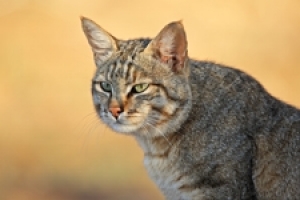
3P Naturals has proudly provided raw pet food diets for dogs and cats for over 15 years. Over the years, we have witnessed the beneficial results of feeding raw. Our mission is to improve and enrich the lives of pets through biologically appropriate nutrition. Our team of veterinarians, educators, consultants, and staff strive to create the ultimate raw pet food diet for domestic carnivores.
The most commonly asked question is: “Why should I feed raw? What’s the difference?”
Genetically, the closest living relative to domestic cats is the African Wild Cat (Felis sylvesris lybica). The Lybica group, which includes the domestic cat, ranges throughout Africa and the Middle East except for the rainforests of western Africa. This wild cat inhabits deserts, woods, plains, and mountains. It has evolved in a desert climate and this is evident in behaviors of wild and domestic sub-species (e.g. their love of heat and sun exposure and their preference for burying feces in sand). This species (except for certain domestic breeds) does not do well in fog, rain, and snow, another indication that their original environment was a desert climate.
Breed-Specific Raw Pet Food Diets for Dogs
Written on Saturday, October 20th, 2012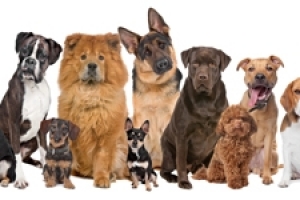
Throughout their years of domestication, dogs have been bred to do specific jobs. These jobs have had an effect on the energy level and behavior of each breed. When determining what’s best for each breed, we can examine their ‘occupations’ to make the right decisions. There are seven groups recognized by the Canadian Kennel Club. Below each group and its nutritional requirements are discussed.
A NOTE ON BODY SCORE
Body score is a scale that gives us a scale for assessing the current bodily state of an animal. A body score of 3 is ideal. A scoring of three means that the ribs are easily felt upon palpation but are not easily visible. Body scores areas listed below:
The Importance of Varying the Raw Pet Food Diet
Written on Sunday, November 18th, 2012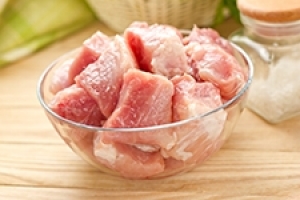
It is important for animals as it is for us to vary the diet. Offering variety ensures that all dietary requirements are met. Below, providing a balanced diet with all essential nutrients is discussed. For more information on balancing the raw pet food diet, see 3P Naturals Raw Pet Food Menu. If you are a dog owner, please also read our article on Breed-Specific Raw Diets for Dogs. Remember that all guidelines are not absolute and your holistic veterinarian should always be consulted on matters concerning diet.
Providing a balanced and varied diet for your pet is easy. It is important to simulate a “prey animal” and so varying food items will ensure that this is done. Basic guidelines are listed below:
The Truth About Bones
Written on Sunday, December 2nd, 2012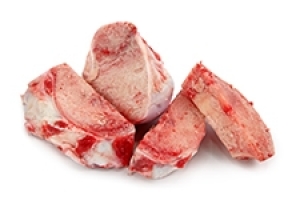
Raw bones are an essential component of the raw diet, but the subject can be confusing to read about. Feeding bones to your pets should be done only after you have educated yourself fully on the subject. Raw bones must be fed safely and correctly. Below, we set the record straight on feeding bones.
Cooked Vs. Raw
Cooked bones and raw bones differ greatly. Cooked bones are dangerous and should never be fed to pets. As bones are heated, they become brittle and the calcium is extracted. Not only are they nutritionally compromised but they crack and splinter, forming sharp edges that are dangerous if swallowed. Cooked bones should be disposed of in a garbage can that is not accessible to pets. They are not edible.
The Do’s and Don’ts of Feeding a Raw Pet Food Diet
Written on Thursday, December 6th, 2012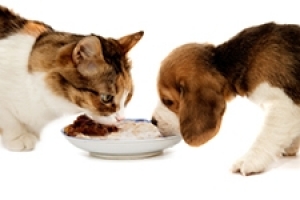
Making Good Choices
Feeding a raw diet to your pet is as natural as it gets and it's important to understand the safest way to go about it. Any diet has its health risks when fed incorrectly so it's crucial to educate yourself before getting started. Proper food handling & storage and monitoring your pets' health are important parts of being a responsible pet owner. Following the guidelines below will keep you and your pets safe, healthy, and happy.
Quality Matters
Raw foods served to your pet should be guaranteed human-grade quality. It is unsafe to feed below human-quality meats. You cannot compose a balanced diet if you are not certain of what you are feeding. Ensure that all raw foods that you provide to your pet came from healthy, human-grade animals.
Age-Appropriate Raw Pet Food Diets
Written on Sunday, January 6th, 2013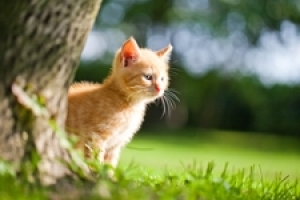
Breed plays a large part in how to feed your dog but age and energy level play an equally important role. Age will help to determine how much to feed, how often to feed, and, in some regards, what to feed. Below we will discuss the major life stages of dogs and cats. Also, see our article on breed-specific raw diets.
Age-Appropriate Raw Pet Food Diets For Dogs
PUPPIES
Generally, a puppy is considered any dog less than one year of age but depending on breed, the growing stage can be much longer. Giant breeds can take up to 3 years to fully develop. The age that a dog is neutered or spayed will also be a major defining factor of how your pup grows and what the dietary needs are. See below for more details.

